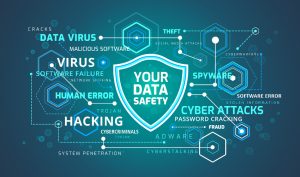Employers need to take some time and review their security plans for their employees that are working remotely. There is a greater security risk for systems that are using remote access technology than for those on-site.
Cybercriminals are always looking for ways to hack into systems that are not well secured and take advantage of gullible employees through social-engineering techniques. The following are some of the things that organizations should consider in order to maintain a security awareness program for remote users:
- Secure the Network
Employees should be discouraged against using open public WiFi which have become an easy target for hackers. In cases where they are using personal WiFi, it should be well secured. It is highly recommended that employees use Virtual Private Networks (VPNs) for communication since information in transit is always encrypted. VPNs should be frequently patched with the latest security updates and use MFA to prevent phishing attacks.
- Conduct an Assessment of your Existing Security Policies
Through qualified cybersecurity personnel, find out about newly discovered threats and whether existing policies are sufficient in the remote setting. You might need to adjust your policies in order to address remote access to company systems, the use of personal devices (BYOD), and file transfer. These policies should be clearly communicated from the management to the employees since most of them might never have worked remotely before and might not perceive the security risks involved. You need to have a list of expectations which employees will adhere to.
Existing policies need to be assessed regularly to ensure that the organization is always in a position to immediately respond to a data breach.
- Issue Cybersecurity Awareness Content to employees
Have a clear communication channel from which you will serve employees with guidelines of good cybersecurity conduct in a remote environment. It is important to do this using the correct channel and in a systematic and orderly manner instead of giving them too much information at the same time which might not make much sense. The content needs to be clear and understandable, containing additional information such as who to get in touch within the case of questions and concerns.
- Authentication and Authorization
Remote working has made it necessary to use MFA, monitoring of access controls, and use strong passwords. Employees working remotely should only be allowed to access what they are permitted to in fulfilling their work-related duties. The use of firewalls will ensure that only authorized content is accessed within the organization’s systems.
- Secure Collaboration Tools
There are so many messaging and collaboration tools today and if not properly secured, you might end up with a data breach. It’s so easy to create a Whatapp group, for example, and share messages with friends and colleagues. This comes with disadvantages since employees may end up sharing sensitive information with unauthorized parties. Another concern is that you are never sure of the security of data stored on employees’ devices. The organization ought to take full control over these messaging and collaboration tools and prohibit those that have not been sanctioned. However, it’s also important to appreciate the fact that it’s not easy to control human social behavior and employees will always look for ways to outmaneuver such restrictions. The best approach, therefore, becomes training of employees. Employees need to know which information is classified as sensitive and therefore cannot be shared with unauthorized persons.
- Monitor Employee Behavior When Working Remotely
Monitoring employee activities within the system helps you know what is happening within the system and will minimize the risk of data breaches.


